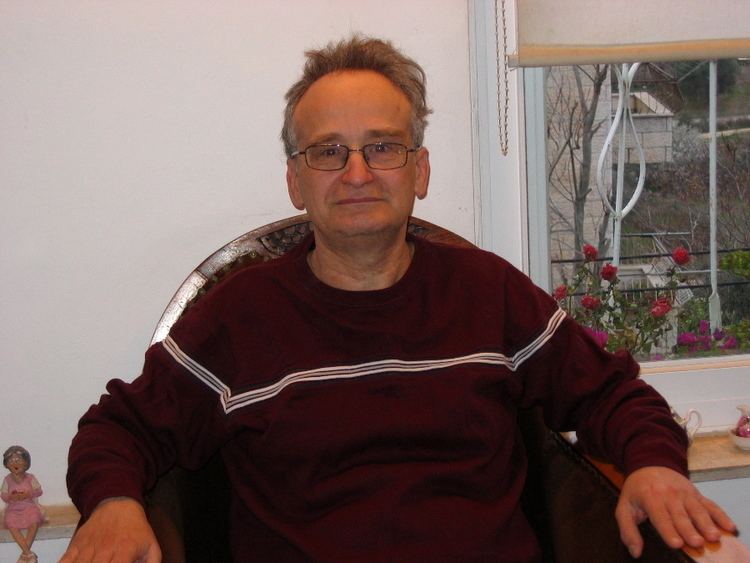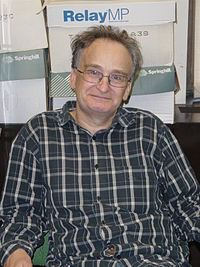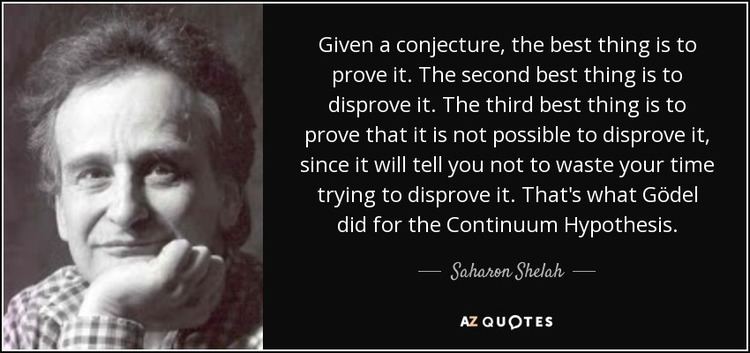Role Mathematician Name Saharon Shelah | Fields Mathematics Nationality Israel | |
 | ||
Born July 3, 1945 (age 80) Jerusalem, British Mandate for Palestine ( 1945-07-03 ) Awards Wolf Prize in Mathematics, Anna and Lajos Erdos Prize in Mathematics, Israel Prize, EMET Prize in Exact Sciences Books Proper and Improper Forcing, Classification Theory and the Numb, Cardinal arithmetic, Classification Theory for Abstract, Around classification theory of Similar People Michael O Rabin, Dana Scott, Alonzo Church | ||
Doctoral advisor Michael O. Rabin | ||
Mm70 saharon shelah how free can a quite complicated abelian group be
Saharon Shelah (Hebrew: שהרן שלח) is an Israeli mathematician. He is a professor of mathematics at the Hebrew University of Jerusalem and Rutgers University in New Jersey.
Contents
- Mm70 saharon shelah how free can a quite complicated abelian group be
- Saharon Shelah The Hebrew University of Jerusalem Iterated forcings for inaccessible cardinals
- Biography
- Academic career
- Awards
- Selected works
- References

Saharon Shelah (The Hebrew University of Jerusalem) Iterated forcings for inaccessible cardinals
Biography

Shelah was born in Jerusalem on July 3, 1945. He is the son of the Israeli poet and political activist Yonatan Ratosh. He received his PhD for his work on stable theories in 1969 from the Hebrew University.

Shelah is married to Yael, and has three children.

Shelah wanted to be a scientist while at primary school, but initially was attracted to physics and biology, not mathematics. Later he found mathematical beauty in studying geometry: He said, "But when I reached the ninth grade I began studying geometry and my eyes opened to that beauty—a system of demonstration and theorems based on a very small number of axioms which impressed me and captivated me." At the age of 15, he decided to become a mathematician, a choice cemented after reading Abraham Halevy Fraenkel's book "An Introduction to Mathematics".

He received a B.Sc. from Tel Aviv University in 1964, served in the Israel Defense Forces Army between 1964 and 1967, and obtained a M.Sc. from the Hebrew University (under the direction of Haim Gaifman) in 1967. He then worked as a Teaching Assistant at the Institute of Mathematics of the Hebrew University of Jerusalem while completing a Ph.D. there under the supervision of Michael Oser Rabin, on a study of stable theories.

Shelah was a Lecturer at Princeton University during 1969-70, and then worked as an Assistant Professor at the University of California, Los Angeles during 1970-71. He became a professor at Hebrew University in 1974, a position he continues to hold.
He has been a Visiting Professor at the following Universities: the University of Wisconsin (1977–78), the University of California, Berkeley (1978 and 1982), the University of Michigan (1984–85), at Simon Fraser University, Burnaby, British Columbia (1985), and Rutgers University, New Jersey (1985).
He has been a Distinguished Visiting Professor at Rutgers University since 1986.
Academic career
Shelah's archive, as of February 2017 lists 1103 mathematical papers including joint papers with over 220 co-authors. His main interests lie in mathematical logic, model theory in particular, and in axiomatic set theory.
In model theory, he developed classification theory, which led him to a solution of Morley's problem. In set theory, he discovered the notion of proper forcing, an important tool in iterated forcing arguments. With PCF theory, he showed that in spite of the undecidability of the most basic questions of cardinal arithmetic (such as the continuum hypothesis), there are still highly nontrivial ZFC theorems about cardinal exponentiation. Shelah constructed a Jonsson group, an uncountable group for which every proper subgroup is countable. He showed that Whitehead's problem is independent of ZFC. He gave the first primitive recursive upper bound to van der Waerden's numbers V(C,N). He extended Arrow's impossibility theorem on voting systems.
Shelah's work has had a deep impact on model theory and set theory. The tools he developed for his classification theory have been applied to a wide number of topics and problems in model theory and have led to great advances in stability theory and its uses in algebra and algebraic geometry as shown for example by Ehud Hrushovski and many others. Classification theory involves deep work developed in many dozens of papers to completely solve the spectrum problem on classification of first order theories in terms of structure and number of nonisomorphic models, a huge tour de force. Following that he has extended the work far beyond first order theories, for example for Abstract Elementary Classes. This work also has had important applications to algebra by works of Boris Zilber.
